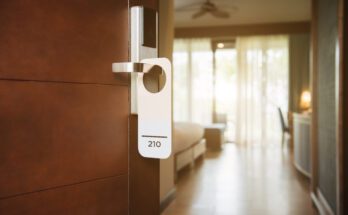Is Jose Altuve Still on Target for 3,000 Hits?
So, what’s going on? There are a few aspects of Altuve’s season that could rightly be passed off as chance-related, but others might serve as signals of decline in the second baseman’s skills. When trying to explain poor performance, one obvious place to look is to see whether pitchers are taking a new, more effective approach to a batter. Pitchers have been throwing Altuve more sliders than ever before, a 28% rate that’s nearly double what it was four or five years ago. He’s struggled facing the pitch this year, hitting .226 with no extra-base hits; with a .283/.312/.387 line against sliders over the course of his career, it’s the pitch he’s had the most trouble with. But those numbers are not disastrous in themselves. Before now, Altuve’s been really good at hitting just about everything.
The zBABIP model in ZiPS does not include a concept of how tightly clustered a hitter’s launch angle is — though I’ve been experimenting with how to include such data in the model — and Altuve has are additional BABIP worries beyond the consistency of his launch angle. There is strong evidence of some poor luck here, with ZiPS thinking Altuve ought to have a .303 BABIP right now, some 50 points above his actual numbers. So, chalk it up to poor fortune and declare 2020 a fluke? Not so fast. If we divvy up the six hits ZiPS sees as missing and, based on Altuve’s profile, add a double and five singles to his record, it only gets him to .255/.317/.353 — less of a disaster, but still a pretty bleak season from a non-ancient player who was once a regular MVP candidate. One of the oddities in Altuve’s profile — and perhaps an explanation for his inconsistent launch angle — is that he’s increasingly gotten his hits from bad pitches. When an at-bat has been resolved by a pitch in what Statcast defines as the “heart” of the strike zone, he’s a career .360 hitter. That dropped to .297 in 2019 and .250 this year.
Altuve’s long been one of the best bad-ball hitters in baseball. That trend has continued in 2020:

The difference between last year and this year is largely that his performance on bad pitches isn’t making up for his (relatively) underwhelming performance against pitches in the meat of the zone. He’s swung at more out-of-zone pitches than usual (38.8%, a career-high in a full season) and made worse contact with those pitches than is typical (68.3%, a career-worst). The result has been a 10.7% swinging strike rate, another career nadir and a rate double that of what he was doing in 2014 and 2015.
So, what’s the underlying cause? That’s a trickier question. Without an obvious drop in exit velocity, I think I’m more worried about approach than swing speed at this point. From the evidence, Altuve looks a lot to me like a struggling player trying to be compensate by being more aggressive with a strength, but doing so in a counter-productive way.
The uncertainty around just where Altuve is right now as a player has naturally had a significantly negative effect on his long-term projections. Coming into 2020, ZiPS projected 17 WAR remaining in Altuve’s career, enough for him to finish at around 2,700 hits and a 40% chance of passing the 3,000-hit mark:
| Year | BA | OBP | SLG | AB | R | H | 2B | 3B | HR | RBI | BB | SO | SB | OPS+ | DR | WAR |
|---|---|---|---|---|---|---|---|---|---|---|---|---|---|---|---|---|
| 2021 | .285 | .348 | .468 | 509 | 83 | 145 | 26 | 2 | 21 | 69 | 45 | 87 | 14 | 118 | -3 | 3.0 |
| 2022 | .282 | .346 | .462 | 485 | 77 | 137 | 26 | 2 | 19 | 64 | 43 | 82 | 12 | 116 | -4 | 2.6 |
| 2023 | .279 | .340 | .453 | 466 | 72 | 130 | 23 | 2 | 18 | 61 | 39 | 77 | 11 | 112 | -5 | 2.1 |
| 2024 | .274 | .333 | .447 | 441 | 66 | 121 | 21 | 2 | 17 | 56 | 35 | 70 | 10 | 109 | -6 | 1.6 |
| 2025 | .272 | .327 | .427 | 412 | 59 | 112 | 18 | 2 | 14 | 50 | 31 | 62 | 9 | 102 | -7 | 1.0 |
| 2026 | .264 | .316 | .407 | 383 | 52 | 101 | 15 | 2 | 12 | 43 | 26 | 53 | 7 | 94 | -9 | 0.2 |
| 2027 | .257 | .304 | .370 | 327 | 41 | 84 | 11 | 1 | 8 | 33 | 19 | 42 | 6 | 82 | -10 | -0.6 |
| 2028 | .251 | .295 | .350 | 203 | 24 | 51 | 6 | 1 | 4 | 19 | 11 | 24 | 3 | 74 | -8 | -0.8 |
The latest projections are considerably worse. I don’t want to say Altuve is doomed or anything, but there really is serious cause for concern. He’s going to finish the season with around 200 plate appearance, and while that’s not an awfully large sample size, the magnitude of the drop-off has been enough to make those 200 plate appearances as damaging to a veteran’s outlook as ZiPS has come across. This projection leaves Altuve forecast for 2,346 hits for his career and an 18% chance of reaching 3,000 hits.
2019’s 3.5 WAR was Altuve’s smallest total since his breakout in 2014, and ZiPS only gives him about a one-in-three in bouncing back to that level in 2021:
| Percentile | BA | OBP | SLG | AB | R | H | 2B | 3B | HR | RBI | BB | SO | SB | OPS+ | WAR |
|---|---|---|---|---|---|---|---|---|---|---|---|---|---|---|---|
| 90% | .303 | .373 | .546 | 502 | 89 | 152 | 30 | 4 | 28 | 82 | 52 | 70 | 26 | 144 | 4.9 |
| 80% | .295 | .362 | .511 | 505 | 87 | 149 | 28 | 3 | 25 | 76 | 49 | 75 | 19 | 133 | 4.1 |
| 70% | .290 | .355 | .499 | 507 | 85 | 147 | 28 | 3 | 24 | 73 | 47 | 79 | 17 | 128 | 3.7 |
| 60% | .287 | .351 | .480 | 508 | 83 | 146 | 26 | 3 | 22 | 71 | 46 | 82 | 15 | 122 | 3.3 |
| 50% | .285 | .348 | .468 | 509 | 83 | 145 | 26 | 2 | 21 | 69 | 45 | 87 | 14 | 118 | 3.0 |
| 40% | .282 | .344 | .457 | 510 | 82 | 144 | 25 | 2 | 20 | 68 | 44 | 90 | 12 | 115 | 2.8 |
| 30% | .279 | .339 | .445 | 512 | 80 | 143 | 24 | 2 | 19 | 66 | 42 | 94 | 11 | 110 | 2.5 |
| 20% | .274 | .332 | .432 | 514 | 79 | 141 | 23 | 2 | 18 | 63 | 40 | 99 | 10 | 105 | 2.1 |
| 10% | .268 | .324 | .400 | 515 | 77 | 138 | 21 | 1 | 15 | 60 | 39 | 109 | 6 | 95 | 1.4 |
ZiPS isn’t projecting a burst back to stardom, but the good news here is that is also doesn’t think a repeat season floating around replacement level is likely either. Altuve’s been lousy and unlucky. But when it comes to Altuve’s eventual Hall of Fame case and a potential tale of trash can redemption, not to mention Houston’s path to remaining a contender as their old core steadily evaporates, 2020 becoming the new norm would be devastating.



